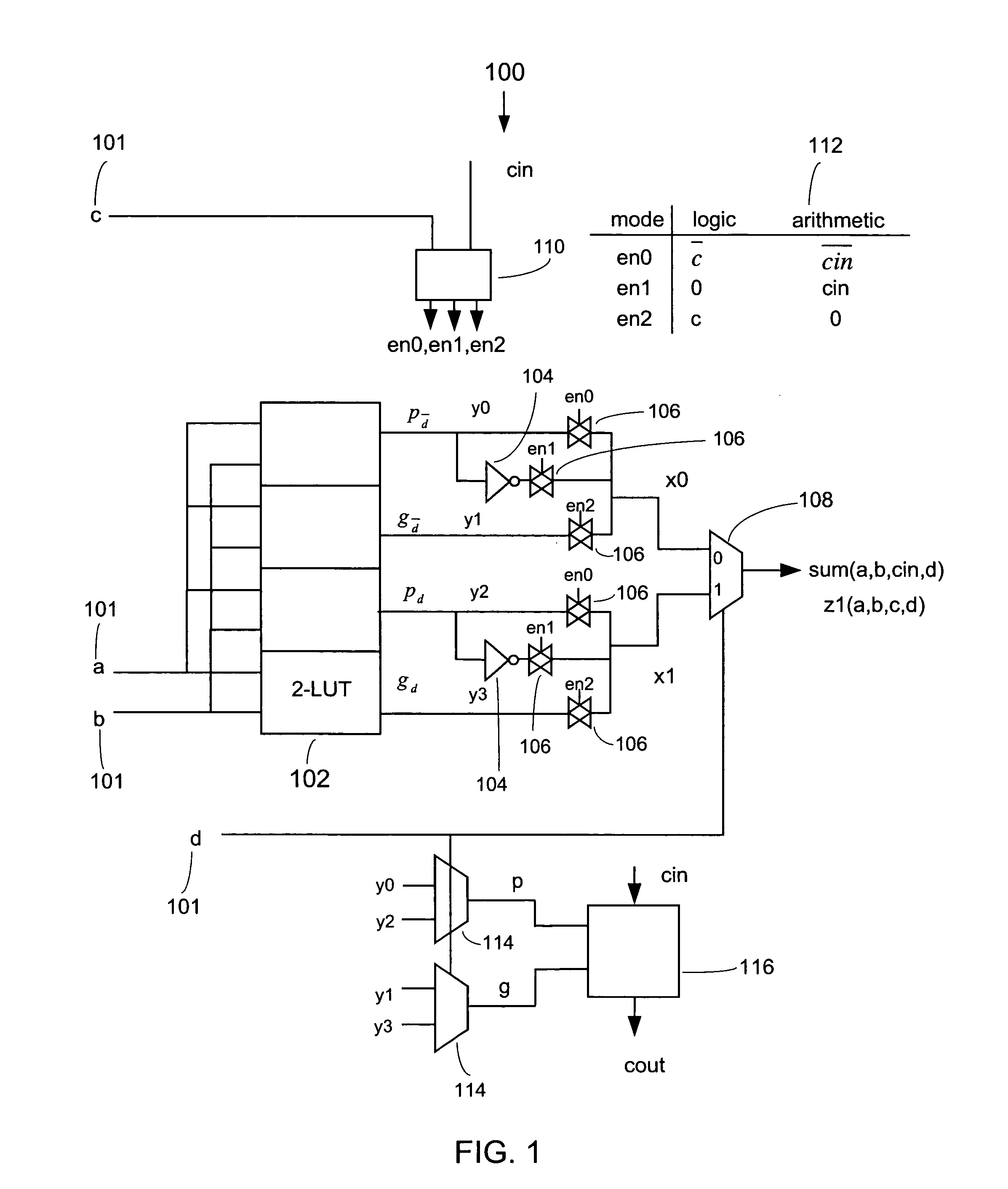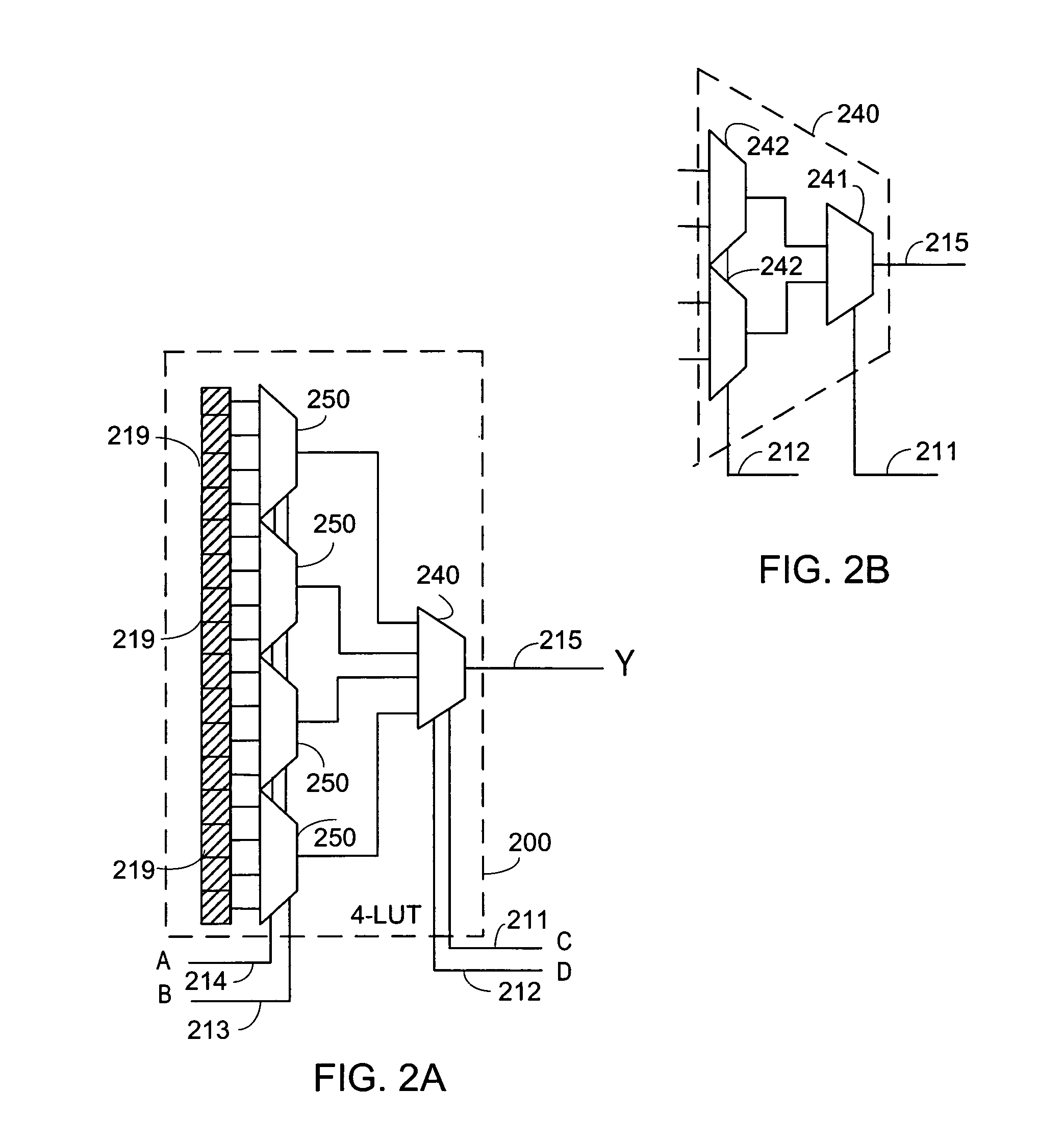Arithmetic structures for programmable logic devices
a logic device and programmable logic technology, applied in the field of logic elements, can solve the problems of inefficiency of larger luts, more hardware is required to construct the 6-lut logic elements, and the cost and speed of a logic circuit constructed with luts,
- Summary
- Abstract
- Description
- Claims
- Application Information
AI Technical Summary
Benefits of technology
Problems solved by technology
Method used
Image
Examples
Embodiment Construction
Inverters and Pass Gates
[0032]Arithmetic structures can result from combining inverters and pass gates (or other multiplexing hardware) with LUT hardware in a logic element.
[0033]FIG. 1 shows a logic element (LE) 100 according to an embodiment of the present invention where a single 4-LUT is broken down into (or considered as) four 2-LUTs. The logic element 100 includes four control inputs (or controls) 101 denoted as a, b, c, and d. Four 2-LUTs 102 are connected to two inverters 104 and six pass gates 106. The four 2-LUTs 102 provide four output values, y0, y1, y2, and y3, and the six pass gates 106 are arranged to provide two output values, x0 and x1. An output multiplexer 108 receives input from the pass gates 106 and produces one of two different outputs depending on the mode of operation: an arithmetic mode and a logic mode.
[0034]The pass gates 106 are controlled by pass gate controls e0, e1, and e2 so that when a pass gate control is zero the signal does not pass and when a pa...
PUM
 Login to View More
Login to View More Abstract
Description
Claims
Application Information
 Login to View More
Login to View More - R&D
- Intellectual Property
- Life Sciences
- Materials
- Tech Scout
- Unparalleled Data Quality
- Higher Quality Content
- 60% Fewer Hallucinations
Browse by: Latest US Patents, China's latest patents, Technical Efficacy Thesaurus, Application Domain, Technology Topic, Popular Technical Reports.
© 2025 PatSnap. All rights reserved.Legal|Privacy policy|Modern Slavery Act Transparency Statement|Sitemap|About US| Contact US: help@patsnap.com



